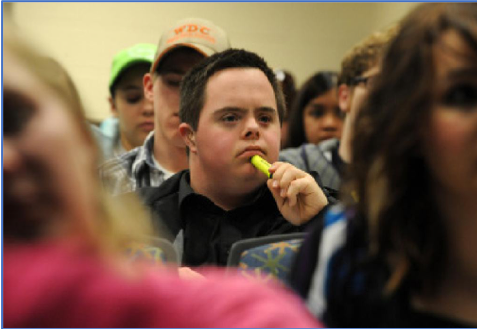
What Are Transition Services and Planning?
Transition services are a set of services provided to the student by the school district and sometimes other agencies.
These services assist the student as he or she moves from high school to independent living, higher education (including college, vocational school and trade school) or employment. This is called “transition.”
Under the Individuals with Disabilities Education Act (IDEA), public school districts must help special education students and their parents make the transition from high school to life after school. Transition planning is determining what services, education, employment, and even living skill activities will best help each student meet his or her needs. Individual Education Pro-grams (IEP’s) must provide a transition plan for meeting the student’s post-school goals.
Who Has the Right To Receive Transition Planning?
Every student with an IEP has the right to receive transition planning, no matter the student’s skill level.
When Do Transition Services Start?
Transition services must start no later than the student’s 16th birthday. Services sometimes start at a younger age.
That is up to the student’s IEP team. Transition planning takes place as a part of the IEP meeting.
Who Takes Part In the Transition Planning Process?
All IEP team members, including the student and parents, decide on transition services.
It is important for both the student and the parent to participate in transition planning, so that the student gets the best plan for his or her future.
Under IDEA, school districts are responsible for inviting representatives from other agencies, such as rehabilitative services or post-school education, to be part of the transition planning process. These agencies may also be responsible for providing some of the services needed by the student. If these other agencies do not provide the agreed upon transition services, school districts must find other ways to meet the transition goals of the student.
School districts must notify parents when transition services are to be discussed at IEP meetings and they must also get parental consent every time they want to invite a representative from an outside agency to an IEP meeting.
What Does Transition Planning Include?
Transition planning includes creating goals for the student after he or she finishes school. The goals will be based on transition assessments related to training, school, employment, and independent living skills. These goals should reflect the student’s strengths, preferences, and interests. In determining these goals, the IEP team must determine what instruction and educational services will help prepare the student for a successful transition from school to post-school life.
As a part of transition planning, the IEP team must develop a statement of the transition services (including courses of study during the final years of high school) that the student needs in order to reach his or her post-school goals. The statement of transition services should:
- Define every activity that must occur
- Identify who has primary responsibility for each activity
- Specify the dates that each activity will begin and end
A student’s courses of study should be meaningful to the student’s future plans and motivate the student to complete his or her education.
How Long Do Transition Services Continue?
A school district is responsible for providing transition services as long as the student is eligible for special education services.
When a student graduates with a regular high school diploma or ages out of eligibility, the IDEA requires that school districts complete a summary of the student’s academic achievement and performance. The summary of performance includes recommendations on how to assist in meeting the student’s post-school goals.
